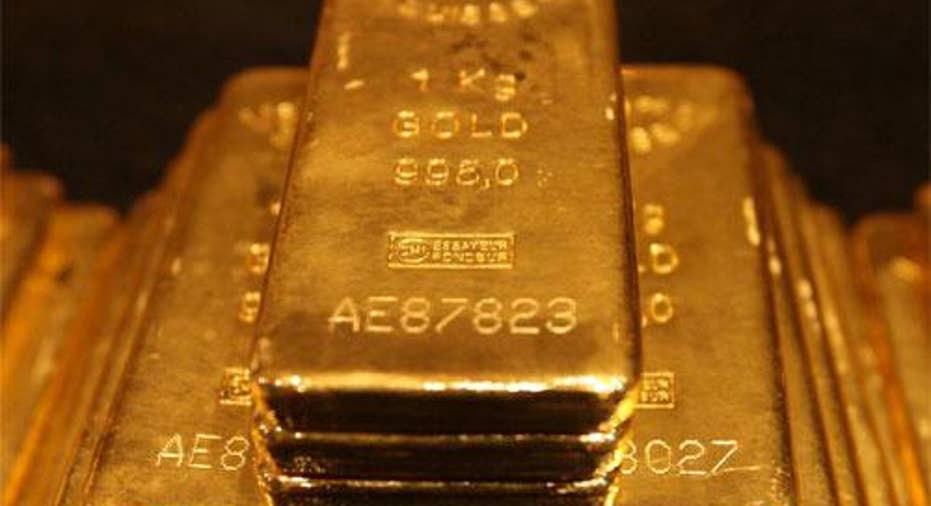Gold Miners Celebrate Marvelous Year With ETFs

Looking back to the first half of year, exchange traded funds that track precious metals miners have been the top performers so far this in 2016, and the metal producers group may continue to shine through the second half.
Year-to-date, the S&P 500 rose 2.4%, the Dow Jones Industrial Average gained 2.9% and the Nasdaq Composite dipped 3.9%.
In contrast, among the top ETFs of the year, the PureFunds ISE Junior Silver ETF (NYSE:SILJ) surged 181.1%, Global X Gold Explorers ETF (NYSE:GLDX) jumped 137.4%, iShares MSCI Global Silver Miners Fund ETF (NYSE:SLVP) advanced 129.5%, Global X Silver Miners ETF (NYSE:SIL) increased 127.8% and VanEck Vectors Gold Miners ETF (NYSE:GDXJ) rose 118.9%.
SILJ tries to reflect the performance of the ISE Junior Silver (Small Cap Miners/Explorers) Index, which is comprised of silver exploration and mining exposure of small-cap companies, such as 16.5% Coeur Mining (NYSE:CDE), 14.2% Pan American Silver (NASDAQ:PAAS) and 14.1% First Majestic Silver (NYSE:AG). The junior silver miner ETF has a large 67.8% tilt toward Canadian names, followed by 33.9% U.S. exposure.
GLDX tracks the Solactive Global Gold Explorers Total Return Index, which includes global gold miners, with heavy 81.8% emphasis on Canadian miners, along with 16.6% Australian companies.
SLVP follows the MSCI ACWI Select Silver Miners Investable Market Index, which includes global silver mining stocks, and also has a large 63.7% tilt toward Canadian companies, along with 12.7% U.S., 12.0% U.K. and 5.4% Mexico. The silver miner ETF also holds a large 22.1% position in Silver Wheaton Corp (NYSE:SLW).
SIL, the largest silver miner-related ETF, tries to mirror the Solactive Global Silver Miners Total Return Index, which is also comprised of global silver miners. However, SIL has a lower 50.5% country tilt toward Canada, but a much larger 22.0% position in the U.S. and 21.0% in Mexico. Additionally, SIL is slightly more diversified, with only a 11.6% weight in SLW.
Lastly, GDXJ, the largest junior gold miner ETF, tries to reflect the performance of the MVIS Global Junior Gold Miners Index, which includes micro- and small-cap gold miners. The fund has a large 65.0% country weight toward Canada, along with 12.4% U.S., 8.8% Australia and 5.0% U.K.
Precious metals miners have been the hot spot for most of the year as gold bullion strengthened on safe-haven demand and a more dovish Federal Reserve outlook.
Gold prices have jumped 25% to $1,325.5 per ounce as of the end of June.
During the start of the year when the equities markets saw two-digit percentage point declines, investors shifted into the gold hard asset as a safe store of wealth. In addition, once equities started rebounding, traders maintained their gold positions on the depreciating U.S. dollar and the extended low rate outlook from the Federal Reserve, betting that precious metals will continue to be a good store of wealth and also help hedge against a more volatile outlook, such as the United Kingdom’s recent referendum vote on breaking away from the European Union, or Brexit.
Meanwhile, gold miners, which have been among the worst performing assets over recent years, staged a rally on the sudden improvement in gold prices.
Looking ahead, gold bullion and miners could continue to shine as a safe-haven play in a post-Brexit world.
The Fed has signaled it would slow the pace of interest rate normalization this year - higher interest rates typically weigh on gold prices since the hard asset provide no yield and would become less attractive to higher-yielding conservative debt assets in a rising rate environment. Moreover, futures traders are even pricing in a chance that the Fed is more likely to cut interest rates than raise them.
Robust demand is also supporting the gold market. For instance, ETF flows into gold have expanded at their fastest pace since 2009. Physically backed gold ETF holdings are still one-third below the December 2012 peak, which suggest that prices can hold at about $1,200 per ounce. The SPDR Gold Shares (NYSE:GLD), the largest gold-related ETF by assets, has been the most popular ETF play of 2016, attracting $12.2 billion in net inflows as of the end of June.
We might still see more out of the emerging markets as demand has not been as robust in the developing world. For instance, China has shown little demand, with the Shanghai Gold Exchange seeing muted growth in volume. While the higher prices may have deterred Asian buyers, demand could pick up if people expect prices to remain elevated.
This article was provided by our partners at etftrends.com.